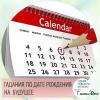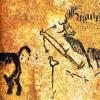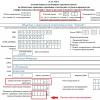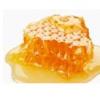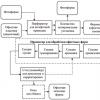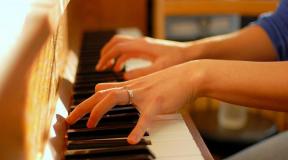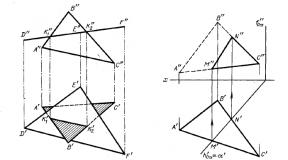Technological map of the lesson on the subject “Technology. Technological maps by technology (service labor) Download technological maps by technology
Technological lesson map for 5th grade on the topic: “Ornament”
Mikheeva Linda Eduardovna, technology teacher, Orlovskoye SUVU, Kirov region, OrlovDescription: The open lesson plan is presented in the form of a lesson plan for 5th grade. This development will be useful for technology teachers, in particular for teachers who carry out educational activities on the educational complex “Algorithm of Success” in accordance with the Federal State Educational Standard LLC. All stages of the lesson described in the map are aimed at developing in students the main types of UUD with their detailed description. Each stage of the lesson is supported by a practice-oriented creative task, which contributes to the activity, curiosity and interest of students throughout the lesson.
Class: 5
Item: Technology
Lesson topic: Ornament
Lesson type:"discovery" of new knowledge
Goals:
Educational: introduce students to the main types of ornament, its symbols and principles of compositional construction; teach students how to decorate a national costume with ornaments.
Developmental: to develop children’s imagination, eye, creative potential, emotional and moral attitude towards works of decorative and applied art, cognitive interest in the subject.
Educational: to cultivate national identity and respect for the historical and cultural heritage of our ancestors, to cultivate love for the culture and traditions of the Russian people.
Planned results:
Subject UUD: know the concept of “ornament”, types, color combinations and symbolism of elements of Russian folk ornament; be able to create basic types of ornaments.
Meta-subject UUD: compare, analyze, choose ways to solve a problem, be able to draw conclusions, predict, work according to plan; determine the sequence of intermediate goals taking into account the final result, carry out the educational task in accordance with the goal, carry out self-testing and self-assessment when completing the educational task; be able to express one’s thoughts with sufficient completeness and accuracy in accordance with the assigned tasks, organize educational cooperation in a group, and adequately perceive the content of classmates’ statements.
Personal UUD: realization of creative potential in objective-productive activities, development of hard work and responsibility for the quality of one’s activities.
Equipment: TCO for computer presentation POWERPOINT (personal computer, projector, screen); textbook Technology. Housekeeping technologies: 5th grade, Sinitsa N.V. – M: Ventana-Graf, 2013; natural visual objects (products decorated with painting, straws, embroidery, dishes without a pattern); visual models of cutting boards, dishes, napkins, Russian folk shirts and headdresses; illustrations of elements of Gorodets painting, folk embroidery, flowers for the reflection stage.
Download Technological lesson map for 5th grade on the topic "Ornament"
Presentation on the topic: Ornament
Communicates new knowledge;
-History of ribbon decoration starts from ancient times. Initially, of course, there were no ribbons, so rope made from plant fibers was used. (What plant fibers do we know?
What fibers of origin do you know?)
And this rope gradually turned first into braid, and over time into tape.
Women of Ancient Rome and Ancient Greece decorated their hair with strips of fabric and ribbons embroidered with gold and precious stones. Women also trimmed their clothes with colored ribbons. And based on certain materials and the color of the ribbons it was possible to determine.... WHAT?
Wide application silk ribbons began in the 14th century. In the French city of Lyon, the production of silk fabrics and threads began to develop quite quickly.
In 1446, by order of the future king Louis XI, Machines for processing silk and making ribbons were imported. A little later, camisoles and cloaks, which were trimmed with brocade and gold ribbons, were in fashion. The demand for such a product began to grow. The city of Lyon eventually became the largest textile center
Ludwig XIV urged all his courtiers to dress beautifully and creatively. At his court, all items of clothing (from trousers to shoes) began to be decorated with ribbons embroidered with pearls and precious stones.
The next French monarch, Louis XV, he himself loved to embroider with ribbons and gave his products to courtiers.
In the 19th century, ribbon embroidery became popular among almost all segments of the population.
For example, there was a tax on fibers and threads from Japan, but there was no tax on tapes.
In our country, ribbons have been used for decoration since ancient times. In ancient times, a bride who was wooed put a wreath with ribbons on her head, which was called beauty. The bottom of festive shirts was decorated with two stripes of red silk ribbons. Other shirts were trimmed with colorful ribbons. A vertical strip of cotton and silk ribbons was sewn down the center of the sundress. Embroidered ribbons were often used instead of belts in festive attire. Even shoes were decorated with ribbons.
Gradually, under the influence of the Rococo and Baroque styles, embroidery with silk ribbons of various floral patterns became popular in Russia. Ribbons decorated clothes by pulling sleeves and forming bouquets of flowers.
In the 1870s, embroidery with silk ribbons became most widespread. Ribbons were used to decorate skirts, sleeves, bodices, collars, dress cuffs, gloves, shawls, and muffs. In addition, quilts, lampshades, umbrellas and various household items were decorated with voluminous embroidery. Various applied decorations made from decorations have also become fashionable: silk ribbons, figured sequins, voluminous appliqués made of tinted gauze with chenille. Various types of embroidery could be combined, for example, applique of silk ribbons was combined with colored satin stitch.
In the 20th century, interest in this type of needlework decreased just like in its other types. At the end of the last century, decoration with silk ribbons began to appear again, recalling the history of ribbon embroidery, which is currently
time is experiencing a rebirth.
One of the main occupations of women in Ancient Rus' was needlework. And sewing and embroidery were the most important of these activities. Each girl had a chest or box filled with all sorts of little things for sewing.
Look, I have a basket in my hands. What's missing here?
Today in our lesson we will make flowers.
Look at what types of tapes there are.
Technology lesson map
Item: technology
Class: 2
Teacher: Aylarova A.P.
Date: 10/18/2015
UMK:“Harmony” (textbook by N.M. Konysheva)
Subject: Making a greeting card.
Preparatory stage: selection of materials and tools, production of templates and samples.
Educational technologies: personality-oriented.
Lesson format: learning new material.
Goal: to teach the technology of making a greeting card.
Tasks:
Educational: create conditions for the development of skills in folding, marking according to a template, and cutting out paper. Train children in image analysis, planning, and self-control.
Educational: ability to work in a team.
Educational: development of creative abilities, development of memory, imagination, attention, speech.
Basic concepts: cardboard, colored paper, template.
Interdisciplinary connections: Life safety (knowledge and application of safety rules when working with scissors and glue). Speech development (enrichment of students' vocabulary). ISO (basics of color science).
Resources: 1. Presentation for the lesson. 2. Musical accompaniment.
Planned results:
Personal: positive attitude towards learning; respectful attitude towards classmates, the ability to evaluate one’s own educational activities; their achievements, independence, initiative.
Metasubject UUD:
Cognitive: independent identification and formulation of a cognitive goal; setting the topic of the lesson, creating an activity algorithm with the help of the teacher.
Regulatory: planning educational activities, monitoring, correcting, regulating one’s activities when performing an educational task, assessing the quality of the work performed.
Communicative: planning educational cooperation with the teacher and peers, the ability to express one’s thoughts with sufficient completeness and accuracy, the ability to listen and engage in dialogue.
Subject: the ability to build a work plan and carry out work according to the plan.
Form of organizing children's activities: individual.
Materials: cardboard, colored paper.
Tools and accessories: glue, parts templates.
| Lesson steps | Activity teachers | Activity students | Formed UUD | ||
| Organizational moment | The bell has rung for us. Everyone calmly entered the classroom, Everyone stood up at their desks beautifully, Greeted politely We sat down quietly, our backs straight, and we all sighed lightly. And let's begin the labor lesson. | Hearing. | Personal: formation of an educational motive. Regulatory: self-regulation - as the ability to mobilize forces. | ||
| Checking the readiness of workplaces. | Now check it out, my friend. Are you ready to start the lesson? Is everything in place? Is everything all right? Is everyone sitting correctly? Is everyone watching carefully? | Checking the readiness of workplaces. | Regulatory UUD: Ability to work independently | ||
| Motivation for students' learning activities. Goal setting. | Introductory conversation. In Russia, on the last Sunday of November, a holiday is celebrated - Mother's Day. On this day I want to please mothers and grandmothers and make a pleasant and sweet surprise. How can you please the dearest and most beloved mother in the world? Make a gift with your own hands! The topic of our lesson is making a greeting card for mom. And our palms will help us. What is our goal for today's lesson? | With the help of the teacher, they formulate the topic of the lesson. With the help of the teacher, they set the goal of the lesson. Make a postcard from colored paper; Reading a poem about palms. Two palms all day | Communication UUD: The ability to integrate into a peer group and build productive interactions with them. Regulatory UUD: Ability to draw up a plan and sequence of actions. Communication UUD: Regulatory UUD: Cognitive: answer questions asked; Correct perception of the task at hand. | ||
| Familiarity with the material for work. | What materials will you need for the lesson? What are we going to do with the paper? What about cardboard? What tools are needed for the job? Let's remember the rules for working with scissors and glue. Use this knowledge in your work. | Colored paper. Paper can be cut, glued, torn and crumpled. Pencil and scissors, glue. | Communication UUD: The ability to listen to the interlocutor and enter into dialogue; Construct a monologue statement. Regulatory UUD: Monitoring and evaluation of completed actions. Cognitive UUD: Apalize objects highlighting essential features; draw conclusions, generalize. | ||
| Drawing up a work plan. | The teacher shows slides with a sequential work plan. | place a sheet of colored paper in front of you; 2) take a simple pencil; 4) place your palm on a sheet of paper; 5) trace your palm very carefully with a simple pencil; 6) now, using scissors, cut out the resulting palm. 7) attach the bow stencil to a sheet of colored paper and trace it; 8) circle the skirt template; 9) Cut out the parts; 10) Fold a sheet of cardboard in half; 11) Glue the “palm” and other parts. 12) decorate the card to your liking. | |||
| Physical exercise. | Two palms. Physical presentation. | ||||
| Creative application of knowledge. | The teacher provides assistance and coordinates the activities of students. | Making a product from colored paper. | Cognitive UUD: Ability to work independently according to the proposed plan; Communication UUD: The ability to listen to the interlocutor and enter into dialogue when discussing a problem. Regulatory UUD: The ability to determine the sequence of intermediate goals taking into account the final result. | ||
| Reflection (summarizing) | Let's see what product you have made. | Self-esteem. | Regulatory UUD: Monitoring and evaluation of performed actions by comparing the obtained result with a given standard in order to detect deviations. | ||
A technology lesson is no different from other academic disciplines. It is associated with an innovative approach to teaching. What should it include? Any technological map of a lesson using the Federal State Educational Standards technology involves two stages in the direct activity of the teacher. The first stage is the design of a lesson or lesson system. The second stage involves the direct implementation of a training session or a system of lessons in the educational process.
Item Features
The technological map of a technology lesson is built according to the classical method. The stage associated with the design of the educational process in this discipline involves focusing on mastering the procedures and certain regulations created by the Ministry of Education of the Russian Federation. In school or non-school time, all the basic parameters that are focused on the development of a creative personality must be present.

A scientific approach to process design
The technological map of a technology lesson in the works of S. I. Lvova, I. P. Tsibulko, Yu. N. Gostev is assumed to be in the form of four main structural components:
- Diagnostics of the level of initial assimilation of educational material by schoolchildren, as well as selection into groups with an equal supply of developed knowledge.
- Organization and motivation of educational activities of schoolchildren. The main task for the teacher is to involve students in educational, cognitive and project work, maintaining the formed interest in learning.
- A learning process that involves the student’s direct acquisition of an academic discipline through interaction with a variety of means.
- Carrying out quality control of the learned material

According to the theory proposed by V. M. Monakhov, a technological map of a technology lesson assumes the presence of five main components:
- Goal setting is necessary for designing a single goal and setting several tasks.
- Diagnostics allows you to establish the fact of achievement or non-achievement of each specific task.
- Divided into parts, tasks help to identify the student’s level of independence and conduct diagnostics.
- The logical structure of the technology is aimed at analyzing the previously achieved goal, the results obtained, and the subsequent development of attention, memory, and cognitive interest.
- Correction of the educational process contributes to the construction of an individual development trajectory for each student.

Educational Technology Components
The technological map of a technology lesson according to the Federal State Educational Standard (boys or girls study according to it, it doesn’t matter) involves the formulation of the main parameters for each educational lesson.
The teacher determines diagnostic goals and thinks through the effectiveness of the lesson. In this case, the learning process will be truly effective, and the achievement of all goals and objectives is guaranteed.

Features of technology lessons for girls
The technological map for a technology lesson (girls), in addition to the theoretical part, necessarily contains information about those practical skills that schoolgirls must master during the lesson. The teacher tries to provide a certain reserve of teaching time in order to practice theoretical knowledge in practice. Depending on the characteristics of the group coming to the teacher, the technological map is adjusted.

System of V.V. Guzeev
What is a technological lesson map for the Federal State Educational Standard? Technology (girls) is a subject that is primarily aimed at training future guardians of the family hearth. That is why in the map of each technology lesson, the teacher must leave some reserve of time for practicing the basic, universal skills provided for in the general education program for this academic discipline.
V.V. Guzeev noted the importance of correspondence between the initial goal and the final result. In addition, the author of this technique pays serious attention to current diagnostics, as well as forecasting the individual development of the student, checking his approach to the goal.

Characteristics of the technological map of the training session
We will present what characterizes the Sample by technology later, first we will give a general definition. A technological map is a kind of passport for a future lesson project intended for a specific group of children. This is a special form of teacher designing the learning process. The teacher combines classical thematic planning with the development of each specific lesson.
The technological map of a technology lesson (boys) involves a description of all the actions of the teacher and schoolchildren, indicating methods of control and features of the organizational process. With its help, one can consider the learning process as an integral system of training sessions connected by content, target, operational, control, regulatory, and reflective stages. It includes development planning for each individual student, monitoring his assimilation of certain knowledge, as well as the development of additional special skills.
To plan the final results of the formation of children's ideas on a certain topic, rules, facts, and laws are selected that correspond to the psychological characteristics of schoolchildren.
If desired, the teacher also includes interdisciplinary connections in the technology lesson map, defining continuity between topics and sections. Thanks to this, the teacher structures the educational material at the optimal level. Each topic is necessarily divided into several subsections that are logically interconnected. For example, first boys get acquainted with metal processing technology and safety rules. Then, having a theoretical basis, they begin to work on the machines. Theoretical knowledge is also important for girls. Having become familiar with the features of a hidden seam, they practice their skills in practical activities.
Design of a technological map
You can imagine it like this:
- The 1st step is to determine the expected results after considering the topic being studied.
- Step 2 involves determining the first and last classes.
- The 3rd step consists of breaking down the content of the topic being studied into separate blocks.
- The 4th step involves highlighting the main material for specific lessons.
- The 5th step involves predicting the goals and form of the lesson in a specific block.
- The 6th step is related to the preparation of tasks for self-control of schoolchildren.
An example of a technology lesson map
Here is a lesson on technology offered by T. I. Shamova:
- Lesson number in the curriculum.
- Topic of the lesson.
- What should the student know?
- What should a schoolchild be able to do? (Subject skills are indicated.)
- Development and consolidation of universal skills.
- Lesson type.
- Demonstration materials (tables, presentations, portraits, models).
- Techniques and actions with which the teacher will check the degree of mastery of educational material.
- Self-monitoring of students (reflection, thanks to which the student tracks his progress through the program material).
Lesson "Patchwork"
We offer an example of technology lessons for girls according to the Federal State Educational Standard:
Lesson topic: “Patchwork”.
Type of educational activity: integrated lesson.
Methodological base: textbook (UMK): N. V. Sinitsa, V. D. Simonenko. Housekeeping technology, 5th grade.
Educational equipment: personal computer, multimedia.
Material base: sets of patchwork fabrics.
The purpose of the lesson: to develop technological skills and abilities when creating products using the patchwork technique.
Planned results:
1. Subject: development of cognitive interest among students in arts and crafts.
- Cognitive - familiarization with the formation of ideas about the use of patchwork in everyday life.
- Regulatory - mastering the technological sequence; mastering the production of samples using the patchwork technique.
- Communication - creating favorable conditions for cooperation.
- Personal: develop aesthetic taste, develop an interest in work, and the ability to follow safe work rules.
- Communicative: emotional attitude towards cooperation.
Involves an explanation of the rules for completing the test task, and demonstration to the girls of fabric samples made using the patchwork technique.
Together with the teacher, the topic of the lesson is formulated, a goal is set, and tasks are determined.
After completing the theoretical block, a physical minute is held (3-5 minutes).
The girls begin the practical part of the lesson. Using scraps of different geometric shapes, they create patchwork compositions in groups.
The work received in groups is analyzed, and the correct use of the patchwork technique is checked. This is followed by reflection and summing up the lesson.
Conclusion
Federal standards of the new generation, introduced in secondary schools, oblige technology teachers to draw up individual maps for each educational lesson. Innovative technology allows the teacher to involve his students in project activities.






